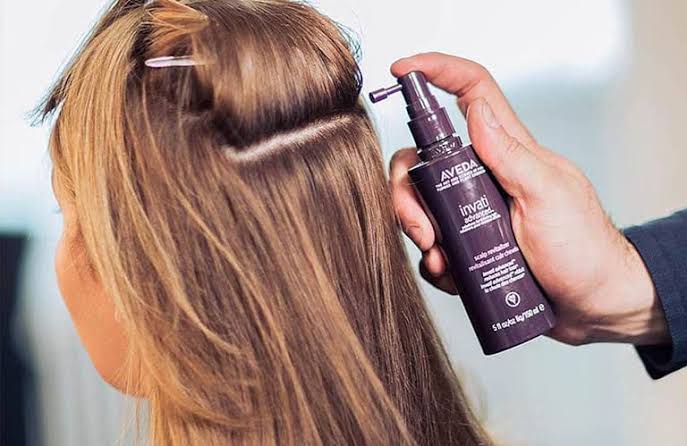
Traveling with wine in your suitcase might seem simple—until you’re staring at a fragile glass bottle, a soft-sided suitcase, and a looming TSA checkpoint. Whether you’re returning from a vineyard in Bordeaux, picking up a rare vintage from a Napa cellar, or just bringing a bottle home from your favorite vacation spot, transporting wine on a plane comes with its own set of challenges. From cracked bottles to customs declarations, there’s a lot that can go wrong without the right precautions.
Fortunately, flying with wine in your checked luggage is completely legal, as long as you follow airline and TSA regulations. The key lies in how you pack it: secure the bottle, prevent leaks, and protect your clothes from accidental spills. Simple accessories like leak-proof wine stoppers and wine boxes or bags from brands such as Wine-N-Gear can make packing easier and safer. And if you’re carrying celebratory champagne bottles from brands like California Champagne Sabers, extra care ensures they arrive ready for the perfect toast. Understanding how much alcohol you’re allowed to bring, which materials absorb impact best, and when to consider alternatives like wine sleeves or shipping can make all the difference. Whether you’re a casual traveler or a serious collector, knowing how to pack wine for air travel ensures your favorite bottles arrive safely—ready to be uncorked and enjoyed.
Can You Travel with Wine in a Suitcase?
Yes—you absolutely can travel with wine in your suitcase, but it must go in your checked luggage, not your carry-on. This applies to both domestic and international flights.
The Transportation Security Administration (TSA), along with most airport security authorities worldwide, enforces strict rules against carrying liquids over 3.4 ounces (100 ml) in hand luggage. Since standard wine bottles are 750 ml, they’re not allowed past security checkpoints in your carry-on.
However, you can fly with wine packed in your checked bag, as long as it meets these requirements:
- The wine must be under 24% alcohol by volume (ABV)
- You’re allowed to bring up to 5 liters (about 6–7 bottles) per adult
- Bottles should be sealed and intended for personal use, not resale
Packing wine in luggage is a common practice for travelers returning from wine regions or special events. Airlines typically allow it, but it’s still wise to check their individual policies—especially regarding weight limits and fragile items.
How to Pack Wine in a Suitcase: Step-by-Step Instructions
Packing wine in your suitcase isn’t difficult—but doing it wrong can lead to broken bottles, soaked clothes, and ruined souvenirs. With a few travel-friendly materials and the right strategy, you can fly with wine safely and stress-free.
1. Use a Hard-Shell Suitcase
Start with a durable, hard-sided suitcase. It offers more protection than a soft one and absorbs external pressure better during baggage handling.
2. Wrap Each Bottle Individually
- Use bubble wrap, wine sleeves, or Wine Skins to protect each bottle
- Wrap tightly and secure with tape if needed
- If you’re improvising, wrap bottles in thick clothing like sweaters or jeans
3. Seal Against Leaks
Place each wrapped bottle inside a plastic zip-top bag or leakproof pouch. Even if a bottle cracks, this prevents wine from soaking your entire suitcase.
4. Pad and Position Strategically
- Center the bottles in your suitcase and surround them with soft clothing
- Avoid packing bottles near edges or corners where impact is greatest
- Use shoes or other sturdy items to create barriers between bottles
5. Limit the Quantity
Unless you’re using specialized wine luggage, stick to 1–6 bottles to maintain good padding and weight distribution. Overpacking raises your risk of damage.
6. Label Your Luggage as Fragile
While it’s not guaranteed, a “FRAGILE” tag can encourage gentler handling by airline staff.
Packing wine in checked luggage is all about shock absorption, leak prevention, and smart positioning. The better you protect each bottle, the more likely it is to survive baggage handling without a scratch.
Best Materials and Tools for Packing Wine Safely

Using the right materials can mean the difference between arriving with a perfectly intact bottle—or a wine-soaked disaster. Whether you’re packing a single souvenir or several bottles from a vineyard tour, these travel-friendly tools help secure your wine in luggage with minimal risk.
Recommended Wine Packing Materials
- Padded Wine Sleeves
Specially designed for air travel, these sleeves offer built-in cushioning and leak protection. Many are reusable and TSA-approved for checked baggage.
- Wine Skins or Bottle Protectors
Self-sealing, leak-resistant plastic sleeves with bubble padding. A go-to choice for wine lovers who fly often.
- Bubble Wrap and Packing Tape
Affordable and effective. Wrap each bottle tightly and secure it with tape to prevent shifting in transit.
- Zip-Top Freezer Bags
Use as an added leak barrier. Place the wrapped wine inside and seal completely—especially useful for makeshift packing.
- Dirty Clothes, Jeans, or Towels
Surprisingly reliable for cushioning. Roll bottles tightly in clothing and position them away from the suitcase edges.
- Specialty Wine Luggage
For serious collectors or international wine hauls, products like VinGardeValise or Wine Check bags offer foam inserts and reinforced cases made specifically for transporting multiple bottles.
What to Avoid
- Thin plastic bags with no padding
- Packing wine near suitcase wheels or frame
- Letting bottles clink or touch each other
- Placing bottles near hard or sharp objects (e.g., heels, chargers)
Whether you’re flying with one bottle or a case, combining the right materials with smart positioning in your suitcase minimizes the risk of breakage or leaks.
Will Wine Bottles Explode on Planes?
No—wine bottles will not explode on airplanes. This is one of the most common concerns among travelers, but the risk of a bottle bursting mid-flight is extremely low when packed correctly.
Why They Don’t Explode:
- Aircraft cargo holds are pressurized and temperature-controlled, just like the passenger cabin.
- Wine bottles are sealed and designed to withstand pressure changes.
- Commercial flights typically don’t reach altitudes or temperatures that would cause a cork to pop or a bottle to burst.
When Problems Do Happen:
- Bottles packed too tightly or without cushioning can crack under external pressure from other luggage.
- If a cork is loose or damaged, it might leak slightly during flight due to minor air expansion.
- Drastic temperature swings (more likely in extreme climates or on small aircraft) can increase the chance of leakage, but not explosion.
How to Prevent Any Issues:
- Use padded sleeves and leakproof bags
- Avoid overpacking or placing bottles near suitcase edges
- Keep wine upright in specialized luggage if possible
So while wine in a suitcase won’t explode, poor packing can lead to cracked bottles or messy spills. The key is impact protection and leak containment, not fear of air pressure.
Can You Pack Wine in Your Carry-On?
In most cases, no—you can’t bring full bottles of wine in your carry-on luggage. TSA and international aviation authorities limit liquids in hand luggage to 3.4 oz (100 ml) per container, and a standard wine bottle is 750 ml.
When You Can Bring Wine in a Carry-On:
There are two exceptions:
- If the bottle is under 100 ml
– Not practical for most wine travelers, but legal under TSA rules.
- If the wine was purchased at a duty-free shop
– You can carry it onboard if:
- The bottle is in a tamper-evident security bag (STE bag)
- You have a receipt dated within 48 hours
- You don’t re-clear security during a layover (important for connecting flights)
Important: If you’re connecting through another airport, you may be forced to go through security again. In that case, even sealed duty-free wine may be confiscated if it’s not allowed through TSA screening.
What Happens If You Try Anyway?
Attempting to carry full-sized wine bottles through security will almost always result in confiscation. TSA agents are strict about the liquid rule, even for sealed bottles.
To avoid losing your wine, always pack it in checked luggage unless you’re buying it at the airport after clearing security.
What’s the Legal Limit for Flying with Wine?
The legal limit for flying with wine depends on whether you’re traveling domestically or internationally, and how much alcohol you’re carrying per person.
U.S. TSA and FAA Rules for Checked Baggage:
- You can pack up to 5 liters (1.3 gallons) of alcohol per person in checked luggage
- Wine must be under 24% alcohol by volume (ABV) — most wines are between 12%–15%, so they qualify
- Bottles must be sealed and intended for personal use, not for resale
That’s roughly six to seven standard 750 ml bottles of wine per traveler.
There’s no federal limit on the number of bottles under 24% ABV for personal consumption, but the FAA imposes the 5-liter limit if the alcohol is between 24%–70% ABV. Again, since wine falls below that, you typically aren’t restricted unless flying with a large quantity.
Airline Policies May Vary
Some airlines impose their own weight limits or alcohol restrictions, so it’s always wise to check with your carrier—especially on international flights or budget airlines.
International Travel Considerations
Customs rules in your destination country may further limit how much wine you can bring in duty-free. You may still be able to import more, but you’ll have to declare it and possibly pay taxes.
Traveling Internationally with Wine: Customs Rules & Tips
Flying internationally with wine? You’ll need to do more than just pack it safely—customs regulations in your destination country determine how much wine you can legally bring in without paying extra duties or taxes.
Common Duty-Free Wine Limits by Country:
- United States: 1 liter per adult (21+), duty-free. You can bring more, but you must declare it and pay a small tax.
- United Kingdom: 4 liters of still wine, 1 liter of fortified wine (like port or sherry).
- Australia: 2.25 liters of alcohol per adult (18+), which equals about 3 bottles of wine.
- Canada: Varies by province. Typically 1.5 liters of wine per person, or two 750 ml bottles.
If you’re over the duty-free limit, you’re usually still allowed to bring wine—just be prepared to declare it and pay import taxes upon arrival.
Tips for Crossing Borders with Wine:
- Always declare your wine, even if it’s under the limit. Failure to do so may result in confiscation or fines.
- Keep receipts—especially for duty-free purchases.
- Use the green/red customs channel depending on whether you’re carrying goods to declare.
- Be aware of connecting flights. If you go through customs mid-journey, your wine may need to be re-checked or taxed again.
Duty-Free Wine Purchases:
- Wine bought at international duty-free shops can be brought into many countries without additional taxes, as long as it stays sealed in a tamper-evident bag and meets local limits.
Alternative: Should You Ship the Wine Instead?
If you’re planning to bring back more than just a few bottles—or you’re worried about breakage, customs, or airline weight limits—shipping your wine might be a smarter option than packing it in your suitcase.
When Shipping Wine Makes More Sense:
- You’re buying a case or multiple bottles from a vineyard or wine shop
- You’re traveling internationally with strict customs laws
- You don’t want to risk damaged luggage or broken bottles
- Your wine is valuable, rare, or aged, and requires extra care in transit
What to Know Before Shipping Wine:
- Wine shipping laws vary by country and state. Some regions don’t allow alcohol shipments across borders without a license.
- Most major carriers like FedEx and UPS only ship alcohol for licensed sellers—not individuals.
- Signature required: An adult (usually 21+) must be present to sign for the delivery.
- Shipping fees can be high, especially for international wine delivery or overnight options.
Tips for Safer Wine Shipping:
- Purchase directly from wineries or wine retailers that offer licensed shipping services
- Ask about climate-controlled shipping if the weather is hot or cold
- Always confirm import taxes or duties in the destination country before shipping
If you’re buying wine during a vacation, ask the winery if they offer shipping options. Many vineyards have streamlined international shipping and may even handle customs paperwork for you.
Bonus Tips for Flying with Wine in Checked Baggage
Once you’ve wrapped your bottles and followed airline alcohol rules, these extra steps can help protect your wine—and your suitcase contents—during the journey.
Smart Packing Tips to Prevent Breakage or Leaks
- Label Your Suitcase as “Fragile”
Ask for a fragile sticker at check-in. It won’t guarantee careful handling, but it signals baggage staff to be gentler.
- Keep Bottles in the Center of the Bag
Surround them with soft clothing (sweaters, jeans, t-shirts) to act as a shock-absorbing cushion.
- Avoid Edges, Corners, and Wheels
The outer edges of your suitcase get the most impact during transit. Keep bottles far from them.
- Distribute Weight Evenly
Don’t stack bottles all on one side of the bag—balance them across your suitcase to prevent shifting and pressure points.
- Double-Bag as a Backup Plan
Place wrapped wine inside a large zip-top or waterproof bag to contain any leaks—just in case something goes wrong.
- Check Airline Baggage Policies
Some carriers may charge overweight fees or have specific alcohol transport rules, especially on international routes.
Good to Know:
- Luggage with padded compartments or built-in dividers works best
- TSA won’t remove your wine during bag screening—as long as it meets volume and ABV rules
- Avoid packing wine in the same suitcase as electronics or valuables




